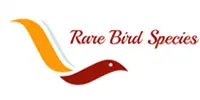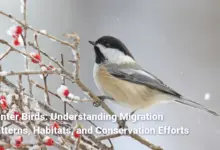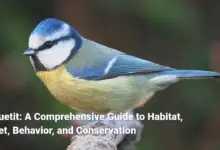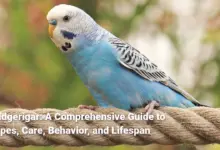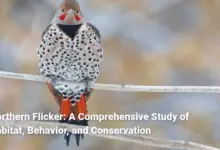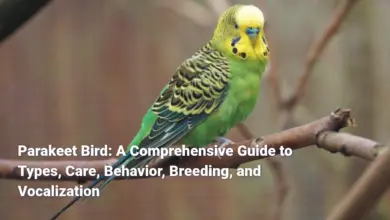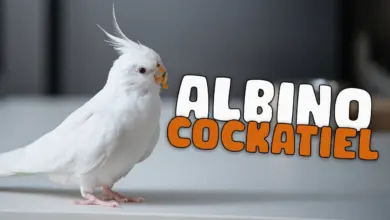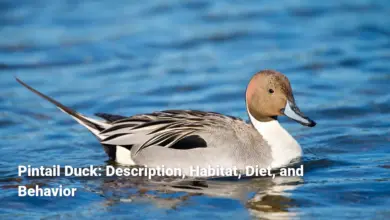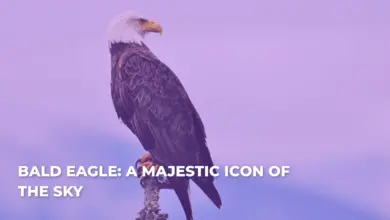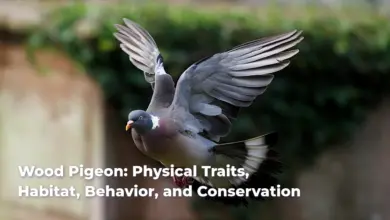Major Mitchell’s Cockatoo: Physical Traits, Habitat, Diet, and Care
Majestic, charming, and resplendent, the Major Mitchell’s Cockatoo, scientifically known as Lophochroa leadbeateri, is one of Australia’s most beautiful bird species. Known colloquially as the Pink Cockatoo, it is immediately recognizable due to its stunning plumage, unique characteristics, and complex behaviors. These delightful creatures capture the hearts of avian enthusiasts and conservationists alike. Their social nature and remarkable intelligence make them not only fascinating to observe but also appealing as pets, albeit with significant care requirements. Despite their beauty, Major Mitchell’s Cockatoos face a variety of threats, from habitat loss to competition for resources, making conservation efforts paramount for their survival. This article delves into their physical characteristics, diet, social behavior, breeding habits, lifespan, health, conservation status, and their suitability as pets.
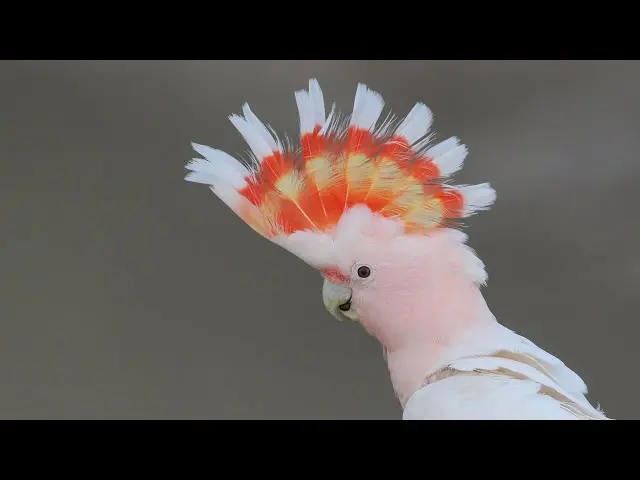
Physical Characteristics
In the world of avian beauty, Major Mitchell’s Cockatoos stand out as jewels of the sky. Their physical features are not only striking but also serve various purposes, from attracting mates to signaling alarm.
Size and Plumage
Major Mitchell’s Cockatoos are medium-sized birds, measuring between 35 to 40 centimeters (approximately 14 to 16 inches) in length. They typically weigh between 300 and 450 grams (10.6 to 15.9 ounces). Males tend to be slightly larger than females, sporting a more robust appearance. The most eye-catching aspect of their physicality is their plumage, which juxtaposes elegance with vibrancy.
The body feathers are predominantly white, with a delicate wash of salmon-pink on the underparts and inner wings. This coloration resembles the gentle hues of dawn, giving them a serene yet joyful presence. The crest of the Major Mitchell’s Cockatoo is perhaps its most distinctive characteristic; it is a stunning display of yellow and pink feathers that can be raised when the bird is excited or startled, serving as a mechanism for both courtship and defense.
- Size: 35 to 40 cm (14 to 16 inches)
- Weight: 300 to 450 g (10.6 to 15.9 ounces)
- Main Colors: White, salmon-pink, yellow, and pink
The contrast between the muted base color and the vibrant crest can almost be likened to an artist’s palette, where each stroke is a careful blend of nature’s finest nuances. Beyond aesthetics, these features serve vital roles in their survival and reproductive success, acting as indicators of health and vitality during courtship displays.
Sexual Dimorphism
In addition to their overall appearance, sexual dimorphism in Major Mitchell’s Cockatoo can be observed, although the differences are subtle yet significant. Males generally have dark brown eyes, while mature females boast reddish-brown eyes. This variance in eye color is crucial for identification, especially when observing flocks in the wild. Furthermore, females possess broader yellow stripes on their crests when compared to males, adding another layer of visual distinction.
- Male Characteristics:
- Dark brown eyes
- Larger body size
- Less pronounced crest
- Female Characteristics:
- Reddish-brown eyes
- Broader yellow stripe on the crest
Such distinctions highlight the evolutionary adaptations of the Major Mitchell’s Cockatoo, ensuring their mating displays are both visual and strikingly intricate.
Distinctive Features
The Major Mitchell’s Cockatoo encapsulates a multitude of distinctive features that make it an emblem of avian beauty.
- Crest: The vibrant crest, a hallmark of this species, flares dramatically to announce its presence or express excitement.
- Plumage: Their soft-textured feathers exhibit a unique combination of white and salmon-pink hues, contributing to their reputation as one of the most beautiful cockatoo species worldwide.
- Beak: They possess a strong and curved beak, optimized for accessing hard-to-reach nuts and seeds, a vital adaptation that ensures their survival in the wild.
- Body Size: Their medium stature aids in efficient flight and agility when navigating their arid inland habitats.
Through examining these striking features, we gain a greater appreciation for the Major Mitchell’s Cockatoo, not just as a subject of admiration but as a testament to nature’s artistry.
Habitat and Distribution
The natural world is a tapestry of intricate ecosystems, and the Major Mitchell’s Cockatoo is a thread that weaves through the arid and semi-arid landscapes of Australia. Understanding their habitat is crucial for both conservation efforts and appreciation of their lifestyle.
Natural Habitats
Major Mitchell’s Cockatoos primarily inhabit dry woodlands, mallee scrublands, savannas, and wooded grasslands. These environments serve as the perfect backdrop for their unique lifestyle, requiring habitats rich in food sources and nesting opportunities.
- Dry Woodlands: The presence of mature trees with suitable nesting hollows is vital for their breeding success.
- Savanna: Open woodland areas enable foraging while providing access to sunlight for warmth and activity.
- Mallee Scrublands: These habitats foster diverse vegetation, crucial for their diet.
To thrive, these cockatoos also need access to water sources, such as nearby creeks or rivers, which are often limited in arid areas. In their natural surroundings, the Major Mitchell’s Cockatoo exhibits remarkable adaptability, often engaging in avian nomadism moving to find resources in response to changing environmental conditions.
Geographic Range
Geographically, Major Mitchell’s Cockatoos can be found traversing a range from the southwestern parts of Queensland down to the northwestern region of Victoria. Their distribution also extends across most of South Australia and into the southwestern portion of the Northern Territory, illustrating their partial nomadic behavior. This adaptability allows them to cover vast territories that encompass various habitats, spanning approximately 5,070,000 km².
- Regions Covered:
- Southwestern Queensland
- Northwestern Victoria
- Most of South Australia
- Southwestern Northern Territory
- Habitat Requirements:
- Large trees for nesting
- Nearby water sources
- Availability of food plants and seeds
The nomadic nature of the Major Mitchell’s Cockatoo illustrates their robust adaptability, a vital trait for survival in the unpredictable and often harsh landscapes of Australia. Such extensive territories allow them to flourish in environments that may vary widely, from lush woodlands to more arid regions.
Diet and Nutrition
Understanding the diet and nutritional needs of Major Mitchell’s Cockatoos is critical to comprehending their lifestyle and ensuring their well-being both in the wild and in captivity.
Natural Diet
In the wild, Major Mitchell’s Cockatoos are primarily granivores, relying heavily on seeds but also incorporating various other food sources into their diets.
- Seeds from Native Plants: Their preferred diet consists of seeds from a variety of native melons and pine species, which provide essential nutrients needed for their energetic lifestyle.
- Waste Cereal Grains: These cockatoos have been observed foraging for waste grains in agricultural areas, showcasing their adaptability and resourcefulness.
- Insects: While primarily herbivores, they occasionally eat insects larvae found in branches, supplying them with necessary protein during breeding seasons.
A varied diet is crucial for these birds to maintain health and vigor. Their foraging behavior plays an essential role in seed dispersal and the overall health of their ecosystem, depicting their significance beyond mere aesthetics.
Dietary Requirements in Captivity
When kept as pets, Major Mitchell’s Cockatoos require a balanced diet to ensure optimal health and longevity. Their nutritional needs significantly differ from those in the wild, and pet owners should focus on providing a well-rounded, vitamin-rich diet.
- High-Quality Pellets: A nutritious pellet specifically designed for cockatoos should be the cornerstone of their daily diet.
- Fresh Fruits and Vegetables: Including fresh produce such as apples, pears, and leafy greens will not only provide hydration but also essential vitamins for their overall health.
- Protein Sources: Incorporating cooked eggs or low-fat meats as additional protein sources can support growth and repair.
- Avoid Toxic Foods: It’s imperative to keep toxic foods like avocados, chocolate, and caffeine far from their reach, as these can be harmful and potentially fatal.
- Access to Clean Water: Fresh, clean water should be provided daily to prevent dehydration.
In captivity, a well-curated diet that reflects their natural feeding habits promotes both health and enrichment. The incorporation of foraging activities, whether through interactive feeding toys or varied food presentations, stimulates their natural instincts, preventing boredom and enhancing their cognitive engagement.
Social Behavior
Social behavior is integral to the survival and well-being of Major Mitchell’s Cockatoos. Understanding their social dynamics allows for better appreciation of their roles in the wild and care in captivity.
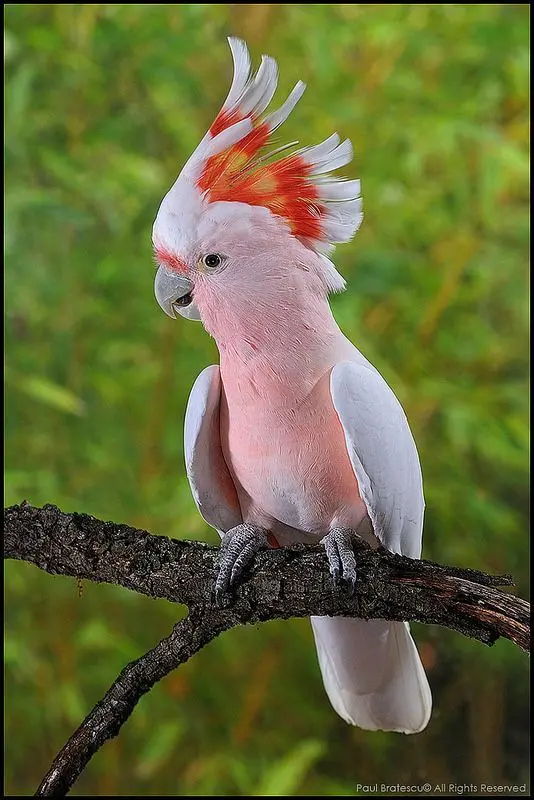
Group Dynamics
These birds are inherently social creatures, often forming strong bonds with mates, which can lead to lifelong partnerships. The intricate behaviors exhibited by these cockatoos are underscores their complex social structure.
- Monogamous Relationships: Major Mitchell’s Cockatoos tend to form close, long-term bonds with their partners, engaging in elaborate courtship displays that include vocalizations and crest displays.
- Flocking Behavior: Outside of breeding seasons, they may gather in flocks ranging from 10 to 50 individuals, benefiting from shared foraging in safe environments away from predators.
- Territorial Behavior: During breeding, these birds become highly territorial, often defending a breeding area that can exceed a mile radius to ensure food availability and nesting resources.
The social structure of Major Mitchell’s Cockatoo not only reflects their need for companionship but also highlights the importance of community in ensuring reproductive success and protecting against external threats.
Interaction with Humans
Major Mitchell’s Cockatoo has a longstanding history of interaction with humans, particularly in the realm of pet ownership. This interaction must be rooted in understanding their needs to provide a fulfilling and healthy lifestyle.
- Intelligence and Learning: These birds are known for their high intelligence, showcasing problem-solving skills and the capacity to mimic human speech, making them delightful companions.
- Bonding and Affection: Owner engagement is crucial, as these cockatoos thrive on socialization. Spending time training and playing not only strengthens the bond but ensures mental stimulation.
- Potential Challenges: While they can be affectionate, they may also develop behavioral issues if neglected, leading to stress-related problems like feather plucking.
Their interactions with humans should always be approached with care, emphasizing the need for consistent attention, stimulating activities, and understanding their emotional needs to foster a healthy, trusting relationship.
Breeding and Reproduction
Reproduction in Major Mitchell’s Cockatoos involves complex behaviors, emphasizing the significance of their social structures and environmental factors.
Mating Habits
As monogamous birds, Major Mitchell’s Cockatoos engage in elaborate mating rituals that solidify their bonds.
- Breeding Season: Typically occurring between August and November, the timing can vary based on geographical location. During this period, males attract females through elaborate and vibrant displays that include head bobbing and crest displays.
- Nesting Behavior: They prefer large tree hollows for nesting, often selecting trees such as River Red Gums or Black Boxes that provide essential protection and insulation for their eggs.
- Clutch Size: A typical clutch consists of 2 to 5 eggs laid every 2 to 3 days. The incubation period ranges from 23 to 30 days, with both parents participating actively in nest care.
- Chick Development: Once hatched, chicks stay in the nest for approximately 6 to 8 weeks, thereafter relying on parental feeding for another 8 weeks, embracing a prolonged parental investment that enhances chick survival.
Understanding the breeding behaviors of Major Mitchell’s Cockatoos is essential, as these practices reflect their dependence on stable environmental conditions and the availability of suitable nesting sites.
Nesting Requirements
The nesting requirements are fundamental to the success of Major Mitchell’s Cockatoos in reproducing.
- Nest Site Selection: They favor hollows in eucalyptus trees, which allows for safety and insulation. These nests are often reused year after year.
- Material Gathering: The parents collect nesting materials, primarily decayed wood and pebbles, to enhance their nesting sites.
- Environmental Factors: Suitable nesting sites require large areas of undisturbed habitats to ensure that competing species do not encroach on their territory, which could lead to disastrous outcomes for broods.
Through both nesting and parental care, these cockatoos reflect enduring social bonds and emphasize the need for conservation efforts that preserve their natural habitats.
Lifespan and Health
A Major Mitchell’s Cockatoo can showcase remarkable longevity and health, often living between 40 to 60 years in captivity, with some exceeding that age with appropriate care.
Average Lifespan
Owning a Major Mitchell’s Cockatoo represents a long-term commitment, especially given their potential longevity.
- Lifespan Range: Typically between 40 to 60 years, making them one of the longest-lived bird species when maintained in nurturing environments.
- Factors Influencing Longevity: Proper diet, social interaction, habitat, and regular health check-ups play pivotal roles in deterring diseases and increasing lifespan.
Common Health Issues
While major Mitchell’s Cockatoos can enjoy a long life, they can be susceptible to several health issues that owners should be aware of.
- Psittacosis: This bacterial infection leads to respiratory complications and is also transmissible to humans, posing a risk for both birds and caregivers.
- Beak and Feather Disease: A viral infection that significantly compromises the feather quality and overall health of the birds.
- Obesity: Often caused by improper diet, maintaining a balanced nutritional intake alongside exercise is critical.
- Behavioral Issues: Lack of social interaction can lead to destructive behaviors, including feather plucking.
Ensuring regular veterinary check-ups can significantly mitigate such risks, ultimately supporting a happy and healthy life for Major Mitchell’s Cockatoos.
Conservation Status
The conservation status of Major Mitchell’s Cockatoo highlights the pressing need for thoughtful management and protection. Their declining population raises alarms about the effects of habitat degradation and competition for resources.
Threats to Survival
Major Mitchell’s Cockatoos face several significant threats that compromise their survival.
- Habitat Loss: The rapid destruction of their natural habitats, particularly after catastrophic events like the 2014 Mallee fires, poses a profound risk.
- Competition for Resources: Influxes of other species, notably Galahs, which compete for nesting sites and food, exacerbate the threats against the Major Mitchell’s Cockatoos.
- Climate Change: Shifts in climate conditions affect food availability and habitat quality, leading to difficulties in survival.
The decline in their population elevates the need for active conservation management that seeks to safeguard their habitats while mitigating threats from competitive species.
Conservation Efforts
Conservation initiatives are vital to address these pressing challenges associated with Major Mitchell’s Cockatoos.
- Habitat Protection: Ongoing efforts strive to restore and conserve natural habitats, creating conditions favorable for breeding and foraging.
- Management of Competing Species: Various control measures are being implemented to manage the populations of overabundant bird species that threaten to outcompete the Major Mitchell’s Cockatoo.
- Public Education and Awareness: Awareness campaigns educate local communities about the importance of protecting these birds and making informed decisions that benefit conservation efforts.
Continued dedication to conservation appears promising, exemplified through emerging partnerships with organizations focused on habitat restoration and sustainable management practices.
Ownership as Pets
Owning a Major Mitchell’s Cockatoo necessitates a comprehensive understanding of their care requirements intertwined with conversations about their complex nature.
Suitability for Pet Ownership
Before acquiring a Major Mitchell’s Cockatoo as a pet, potential owners must evaluate their lifestyle and readiness for the commitment involved.
- Social Nature: Their affectionate disposition makes them appealing, but it also necessitates extensive interaction to keep them emotionally satisfied and engaged.
- Intelligence Considerations: Their need for mental stimulation means owners should prepare for activities, training, and interactive engagement to prevent boredom-related behaviors.
- Lifespan Consideration: Their long lifespan demands a serious commitment, as pet owners must be equipped to care for these birds for several decades.
Care Requirements
High-quality care is essential for Major Mitchell’s Cockatoos to thrive in captivity.
- Spacious Housing: An adequately sized cage is crucial, ideally a minimum of 4 feet by 3 feet by 4 feet, allowing space for movement, activity, and play.
- Dietary Needs: A diet supplemented with high-quality pellets, fresh fruits, and vegetables keeps them healthy and satisfied.
- Regular Interaction: Engaging with them daily helps to foster strong bonds and fulfills their sociable nature.
- Health Monitoring: Regular visits to an avian veterinarian are fundamental to maintaining their health and addressing any potential issues early.
By aligning their care requirements with their emotional and physical needs, owners can facilitate a fulfilling and enriching environment for their Major Mitchell’s Cockatoo.
Behavioral Traits
Major Mitchell’s Cockatoos exhibit fascinating behavioral traits that deepen our connection and understanding of them as companions.
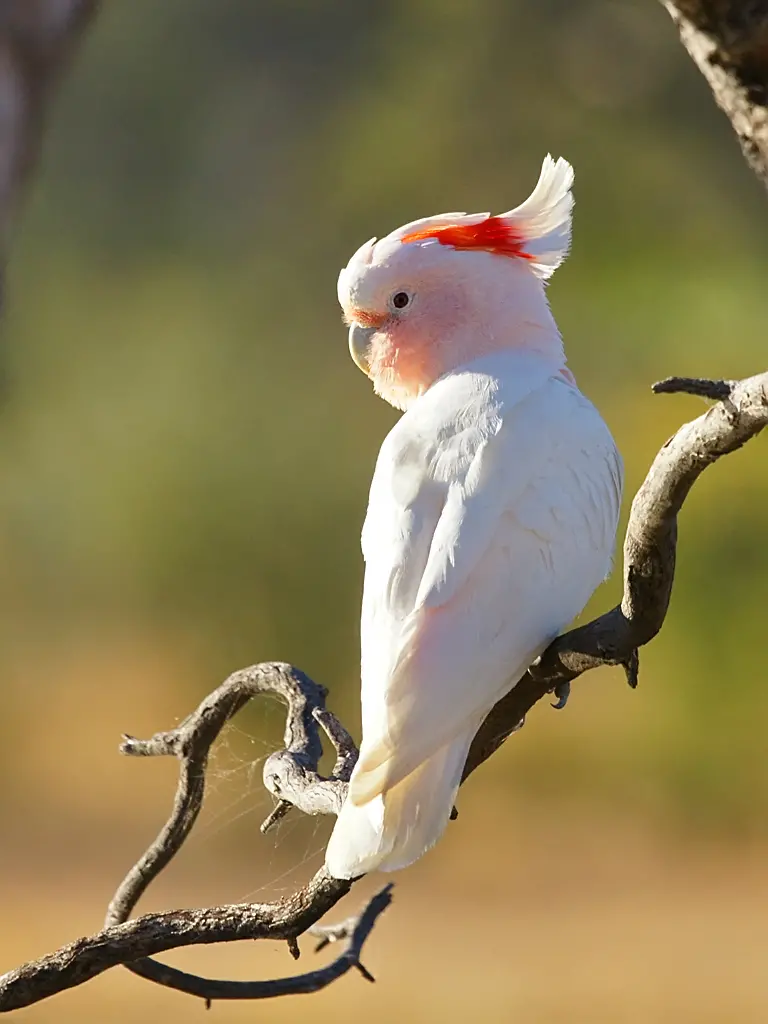
Vocalization and Communication
These birds communicate through vocalizations that convey various meanings, enhancing their interactions both socially within their flocks and with humans.
- Array of Sounds: From gentle coos to sharper calls, their vocalizations facilitate social cohesion and act as warnings during flight.
- Mimicking Abilities: Their capacity to imitate human speech as well as other environmental sounds enhances engagement with owners, making training enjoyable.
- Use of Body Language: They convey emotions and contexts through position and crest displays, underscoring their communicative competence.
Playfulness and Intelligence
The playful and intelligent nature of Major Mitchell’s Cockatoos is intrinsic to their personality, requiring environments that nurture these traits.
- Curiosity and Problem-Solving: They excel at learning tricks, navigating puzzles, and engaging in interactive play, reflecting their highly adaptive brain.
- Foraging Behavior: Engaging in simulated foraging activities is crucial for mental enrichment, providing them with an outlet to display their natural behaviors.
- Emotional Bonding: Their playful nature facilitates emotional connections with their human caregivers, aiding in creating a harmonious household.
By acknowledging and facilitating these behavioral traits, owners can provide a nurturing and stimulating environment, thus enriching the lives of their avian companions further.
Conclusion on Conservation Importance
The conservation of Major Mitchell’s Cockatoo is vital not only for preserving its population but also for the health of its ecosystem. Their role in seed dispersal and their ecological significance call for immediate action to safeguard their habitats and address the threats they face. Continued conservation initiatives and public awareness efforts are imperative to ensure that future generations can experience the joy and beauty of Major Mitchell’s Cockatoos in the wild. As stewards of the environment, we must not only appreciate their allure but also commit to protecting these magnificent birds and the delicate ecosystems they inhabit.
